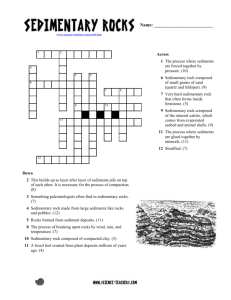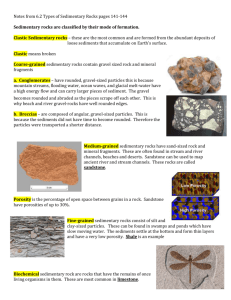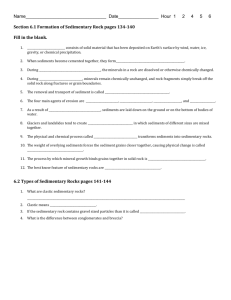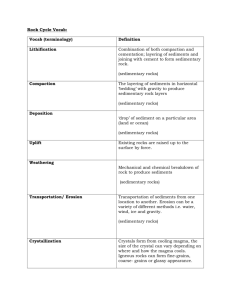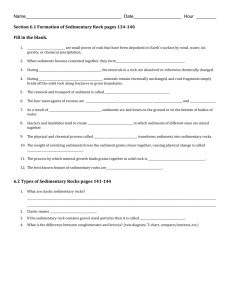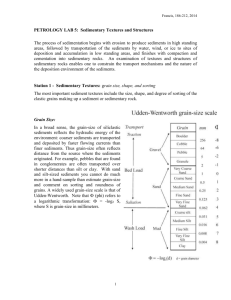Questions MS Word
advertisement
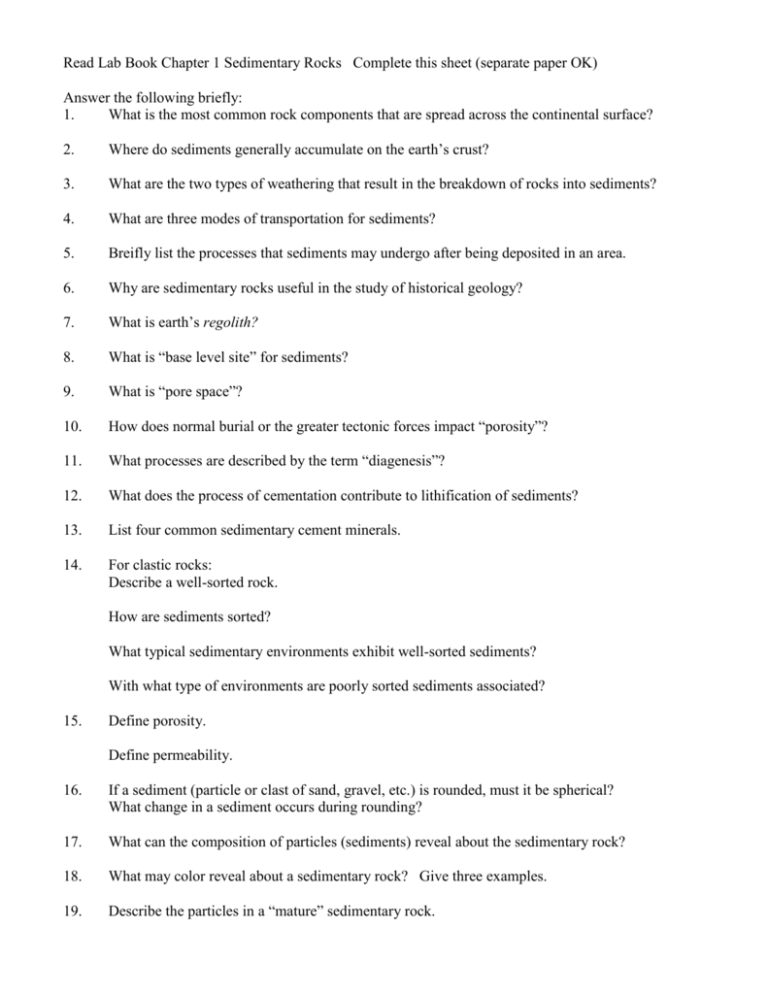
Read Lab Book Chapter 1 Sedimentary Rocks Complete this sheet (separate paper OK) Answer the following briefly: 1. What is the most common rock components that are spread across the continental surface? 2. Where do sediments generally accumulate on the earth’s crust? 3. What are the two types of weathering that result in the breakdown of rocks into sediments? 4. What are three modes of transportation for sediments? 5. Breifly list the processes that sediments may undergo after being deposited in an area. 6. Why are sedimentary rocks useful in the study of historical geology? 7. What is earth’s regolith? 8. What is “base level site” for sediments? 9. What is “pore space”? 10. How does normal burial or the greater tectonic forces impact “porosity”? 11. What processes are described by the term “diagenesis”? 12. What does the process of cementation contribute to lithification of sediments? 13. List four common sedimentary cement minerals. 14. For clastic rocks: Describe a well-sorted rock. How are sediments sorted? What typical sedimentary environments exhibit well-sorted sediments? With what type of environments are poorly sorted sediments associated? 15. Define porosity. Define permeability. 16. If a sediment (particle or clast of sand, gravel, etc.) is rounded, must it be spherical? What change in a sediment occurs during rounding? 17. What can the composition of particles (sediments) reveal about the sedimentary rock? 18. What may color reveal about a sedimentary rock? Give three examples. 19. Describe the particles in a “mature” sedimentary rock. 20. How are clastic sedimentary rocks classified? (Pg. 12-13) Example: What is the particle size range for Pebble Sand (all) Silt Clay (note: clay is a particle size) 21. What is bedding within sedimentary rocks? 22. Describe and sketch the following types of bedding: Planar bedding Cross bedding Graded bedding What is a turbidite? List a possible environmental setting where each can occur. 23. How do mud cracks form? Make a sketch. 24. How do ripple marks form? What is the difference between current ripples and oscillation ripples? Sketch both. 25. What do scour marks and cut and fill structures reveal about the environment of formation? Sketch the pattern. 26. Which of the above sedimentary structures may be found on the top side of a bedding plane? Which sedimentary structure may be found on the underside of a bedding plane? 26. What biologic activity may be recorded in sedimentary rocks? 27. Refer to Table 1.2 (pg. 28) which lists the types of carbonate and chemical rocks. Using your rock chart and the table, list three rocks that are “biochemical” (organic in origin) and three that are chemical. Describe where on earth each carbonate environment may occur: Shallow water: Deep Sea Evaporitic Freshwater 28. What is the composition of the rock chert? What is the origin? 29. What is the composition of coal? When was the greatest development of coals?


